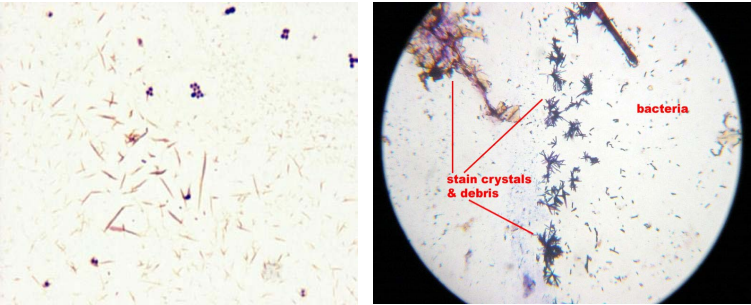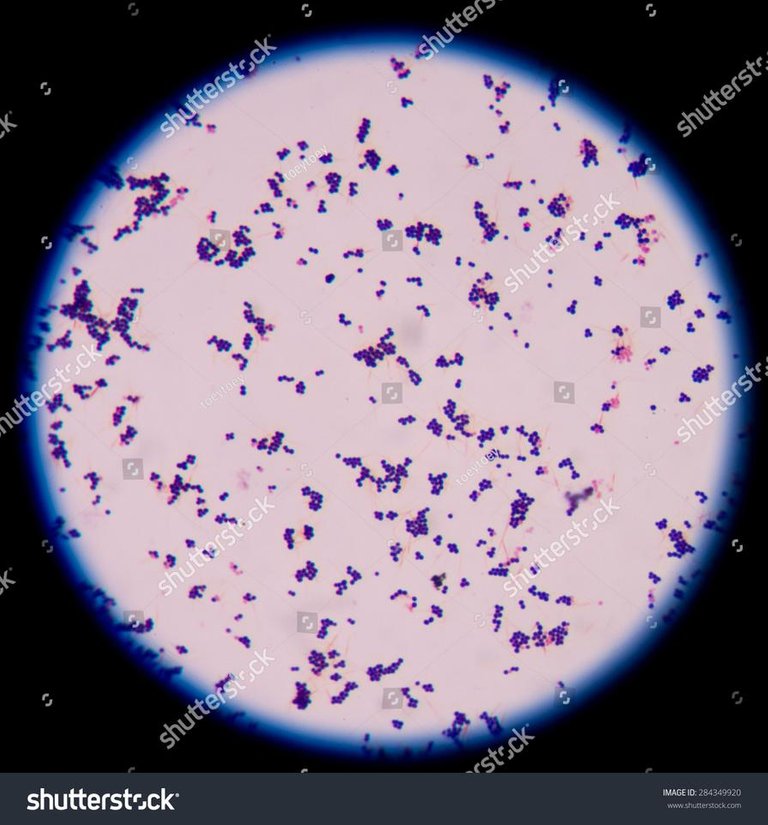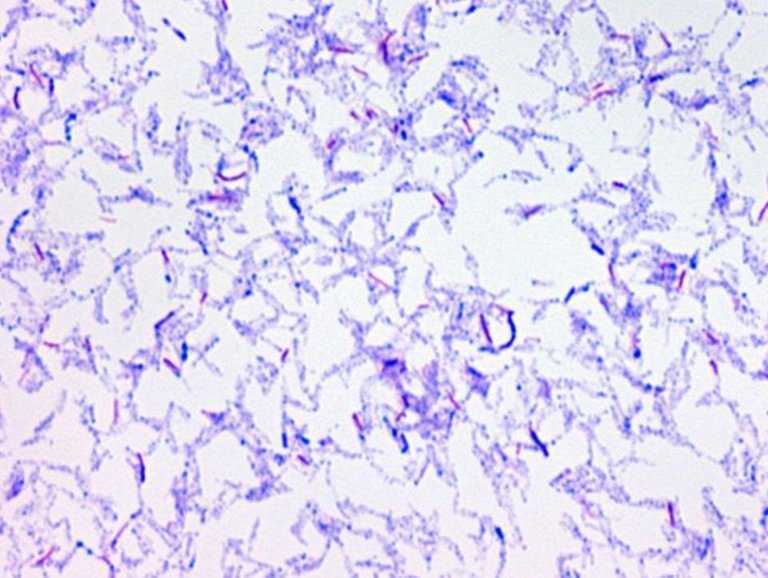Practical Microbiology: Gram Stains
Gram stains are some of the most basic microbiology tools in medicine. The idea is to give clinicians clues of the nature of the infection. They can give preliminary treatments on the patients as needed. Then, the lab can perform more detailed sensitivity testing.
The color which bacteria stain depends on the level of peptidoglycan in their cell wall. Even though the stain is looking for bacteria, you can notice other organisms like yeast as well.
The gist of the method involves four steps:
- Primary stain of crystal violet
- Fixing stain of iodine
- Alcohol decolorizer
- Counter stain of safranin
Then, observe the slides under the light microscope at 100x power in oil.
Where I work, acetone is the decolorizer of choice. Depending on the brand of stain you use, the time of each stain may vary on the inserts. But, the basic principles stay the same. Issues usually occur during the decolorizing step. Overdoing it results in everything looking like gram negative organisms. Another one would be confusing debris (stain crystals) as organisms.

Source
In addition to the stain, the organisms' shape and the way they aggregate also gives clue to what they could be. Here are some examples:
Gram-positive cocci in clusters

A Shutterstock image in case you can't tell.
Possible organisms: Staphylococcus species such as S. aureus
Gram-positive cocci in chains

Source
Possible organisms: Streptococcus (including beta-hemolytic Strep.) or Enterococcus species
Gram-negative bacillus

Source This particular one is E. coli
Yeast and fungal elements

Also a stock photo, but from 123RF
Possible acid-fast organisms or Nocardia species

Source
This is also referred to as "gram-positive beaded bacilli".
Of course, there are other forms and shapes one could see under the microscope. The point is, they give valuable clues to what the infectious agents could be. I have often used what I see under the scope to determine if the gram stains, done by hand or machine, are legitimate. Sometimes, you may not catch rare growth of bacteria as their numbers are few, but that is what the cultures are for. But in general, the gram stain should correlate with whatever growing on the plates.
Gram Stains in Practice
The lab will read every STAT gram stains ordered. Every non-STAT gram stains sourced from sterile body sites receive the same treatment. Some specimens, such as sputum, needs examination to determine validity of specimen. The lab can reject sub-par specimen on the grounds of not suitable for testing.
From my experience, gram stains from surface wounds and abscesses tend to be not read. They are often contaminated with various flora. Reporting junk-filled gram stains adds little value to clinicians treating patients. Time is better spent culturing and isolating the infectious agents.
At large facilities, automatic stainers such as Aerospray® Gram Series 2 Slide Stainer/Cytocentrifuge perform most of the work. The manufacturer boasts how the product can produce up to 30 slides per cycle. In practice, that usually result in a sharp decrease in quality. It turns out that 12 to 16 are the safest batch size you'd want for clear reads.
Have you checked out the-odin.com?
I've been trying to get him to join steem, but no luck, yet.
A whole company?
I think it might interesting to talk to @nealmcspadden as that website sells small, DIY, instruments for schools, which I would hope include the homeschooling crowd. Don't quote me though.
Nah, It's just one guy.
Afaik.
He does have a comprehensive set up, though.
Out of curiosity, what was your sales pitch for getting him to come?
Being well known in steemstem?
Reaching tech savvy early adopters with his offers.
Random guy from the interwebz reaching out.
I forget if I pushed the immutable ledger.
Thanks for trying. :)
@enforcer48, Keep up the good work and keep sharing Knowledgeable aspects. In school times I haven't put lot of concentration towards the Science subject.
Posted using Partiko Android
you should tag steemstem for post like this one!
I don’t think my post actually follows @steemstem’s guideline. Maybe I’m wrong. Lol
It's pretty close. It only takes a few minutes ironing things out. Read on if you are tempted:
1 - Not bad on images, but you can find alternatives via wikimedia commons etc fairly easily for most things. Case and point, e.coli:
2 - For the text you took from other sources, this should behave like images too, just put it in quotes or quote block:
etc.
Then just drop the source URL underneath or at the end of the post.
And that's it. Couple of extra minutes cleaning up the copyright concerns and you could get a bit of a vote from us. If you ever wanna get bigger votes just lemme know, happy to help
Thanks! I'll keep that in mind for future posts.